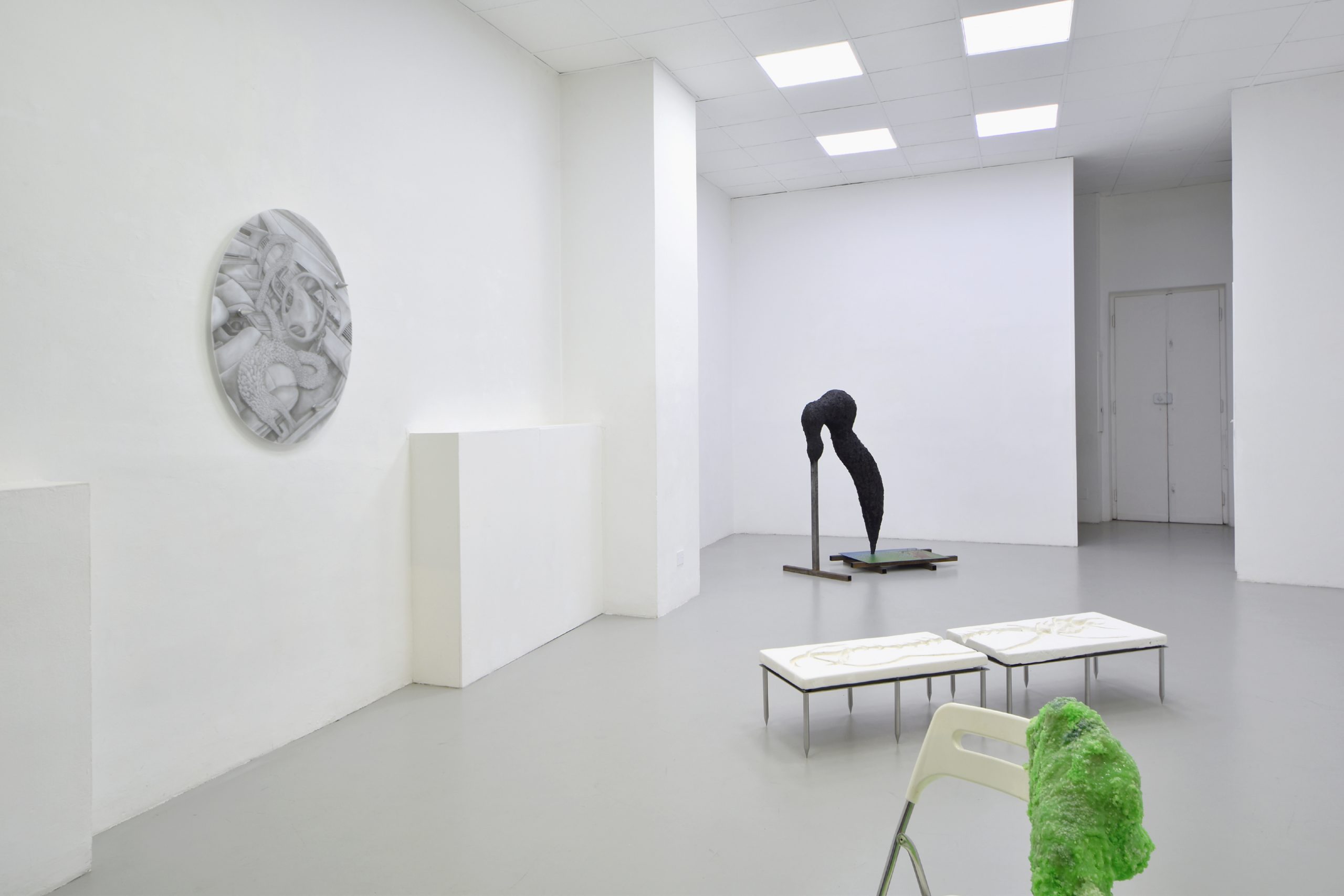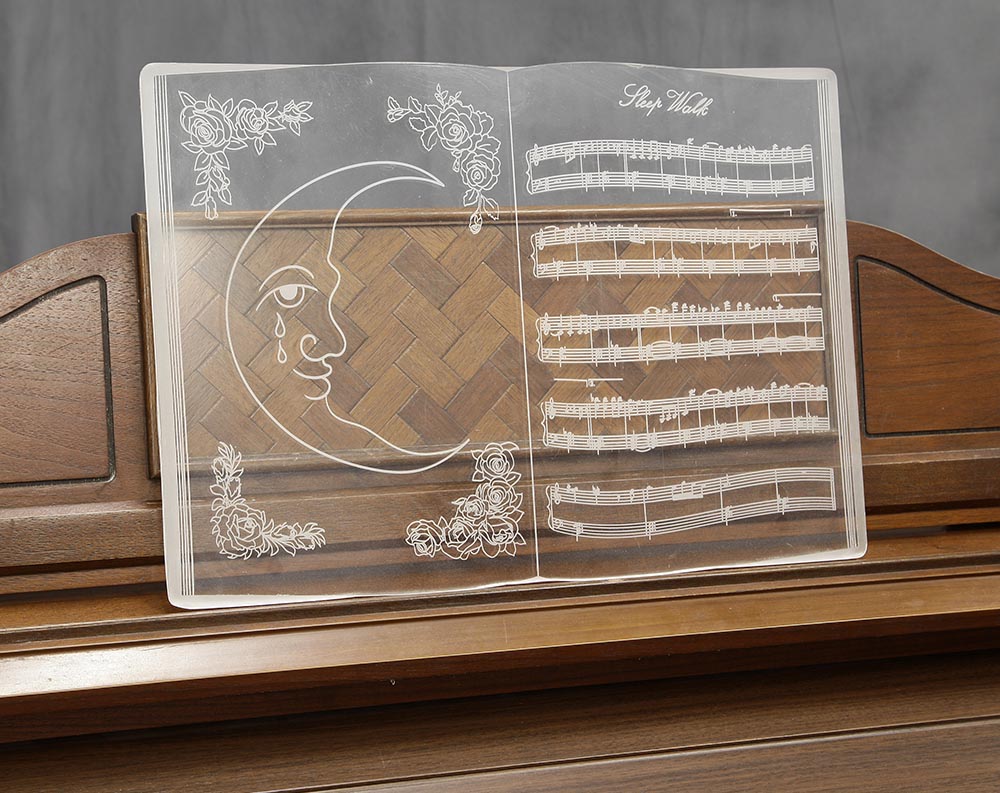OFLUXO
Mutante il corpo mio s’abissa
Matteo Gatti
At Dimora Artica, Milan, Italy
April 12 – May 19, 2021
The simultaneity of opposites is what has always characterized the mythology of the monster, placing it at the crossroads between the supernatural – or fantastic – and earthly dimension. In Latin terminology (monster, monstrum) the word indicates both a prodigy – the demonstration of the divine will – and a demon, or an admonition – from the verb moneo. Between a popular belief to be preserved and an entirely human need to, psychologically, project desires and fears onto another entity, in order to exorcise their potential, monsters exist as a constitutive component of reality itself, notably, as a manifestation of its most irrational and uncontrollable features. Fetishes more human than humans, they are a category intrinsic to the Homo species.
By reconnecting to the image of the monster and to its representation as a negative otherness, antagonist of the normed subject, Mutante il corpo mio s’abissa outlines an ecology in which different biological and inorganic forms come into contact with other human and non-human entities. There, the traditional hierarchies among living beings are eroded in favor of a process of mutation that takes on a horizontal direction, decentralizing the figure of the anthropos and putting in check the traditional theories of evolution and human exceptionalism. Gatti’s research arises from the narrative anecdote at the center of the work “Mutante il corpo mio s’abissa”, focal point of the exhibition. An amorphous, muddy protuberance emerging from the waters of Loch Ness overlooks a sonar scan image that outlines the presence of an arcane figure at the bottom of the lake basin. Fascinated by the myth of the famous monster of Scotland, known as Nessie, Gatti traces its vicissitudes up to their most recent developments. In fact, it dates back to 2016 the news of the discovery, in the depths of the Scottish lake, of a prop used in 1969 during the shooting of the film The Private Life of Sherlock Holmes, directed by Billy Wilder. Once again, starting with the famous “photo of the surgeon” that, published on the front page of the Daily Mail on April 21, 1934, helped to spread the story to a wider audience, the episode is functional to fuel the legend which claims a mysterious creature to inhabit those places. The work “4r80#932_ur!&90” also echoes enigmatic findings, which this time take on the features of remote paleontological fossils. Large casts of chimeric creatures, between the invertebrate and the crustacean, are arranged as if on a clinical table, ready to be explored in order to define their dark nature. The plaster shapes outline the configuration of ancient biological forms and of those big prehistoric viruses that, due to the landslides caused by the logic of extractive capitalism – before climate change – could now come back to light, generating a clash of temporalities with dystopian tones. The boundary between the real and the fantastic becomes more and more blurred, bringing these organisms closer to our ontological level. It is on the thread of this speculation that the works “Nisse” and “Cattivi pensieri” were conceived, in which Gatti imagines a future dimension where the human being is evoked by the mere presence of objects of everyday life, products of hyper-consumerism among which monstrous mutant apparatuses protrude. The contamination proceeds in the form of a territorial revenge, actors previously considered marginal and minor now claim their space of autonomy, beyond an anthroponormated world. The symbiotic contact between different planes of reality generates a condition of xenorealism: due to a dysfunctional mutation, the linear evolution jams, producing an abnormal ontogenesis.
That of Gatti is a gaze at the change that could manifest in a hypothetical post-civilization, a playful and irreverent reverie that indicates how, perhaps it is possible to learn from these different forms of life how to make one’s way in the future. Whether it’s having to develop a different sensitivity to things or a new way of being in the world – extending our organelles as in the work “Diorama”, in order to perceive further nuances of it. We could learn from “monsters” how to be less human, if human is synonymous with that Humanism that led to the current disaster in the so-called era of the Anthropocene. From this perspective, the exhibition can act as an invitation to reflect on the condition of “monstrosity” as an alternative point of view on the existent, a way to restore the connection with ontological spheres previously stigmatized and bound to the background. All that is left is to be shipwrecked in that sea, sinking among the suggestions offered by the artworks in order to imagine divergent development paths.
— Deborah Maggiolo






















OFLUXO is proudly powered by WordPress


